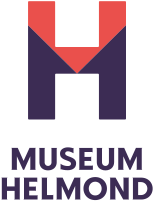
Museum policy
Museum policy
Policy, mission, and vision
Helmond Museum is helping to shape the twenty-first-century museum as an institute of cultural and social relevance by exploring the current zeitgeist and determining its significance for the museum. We discovered that contemporary art is placing new demands on the museum and that the needs of visitors are changing. A reduction in grants and sponsorships has posed another challenge.

